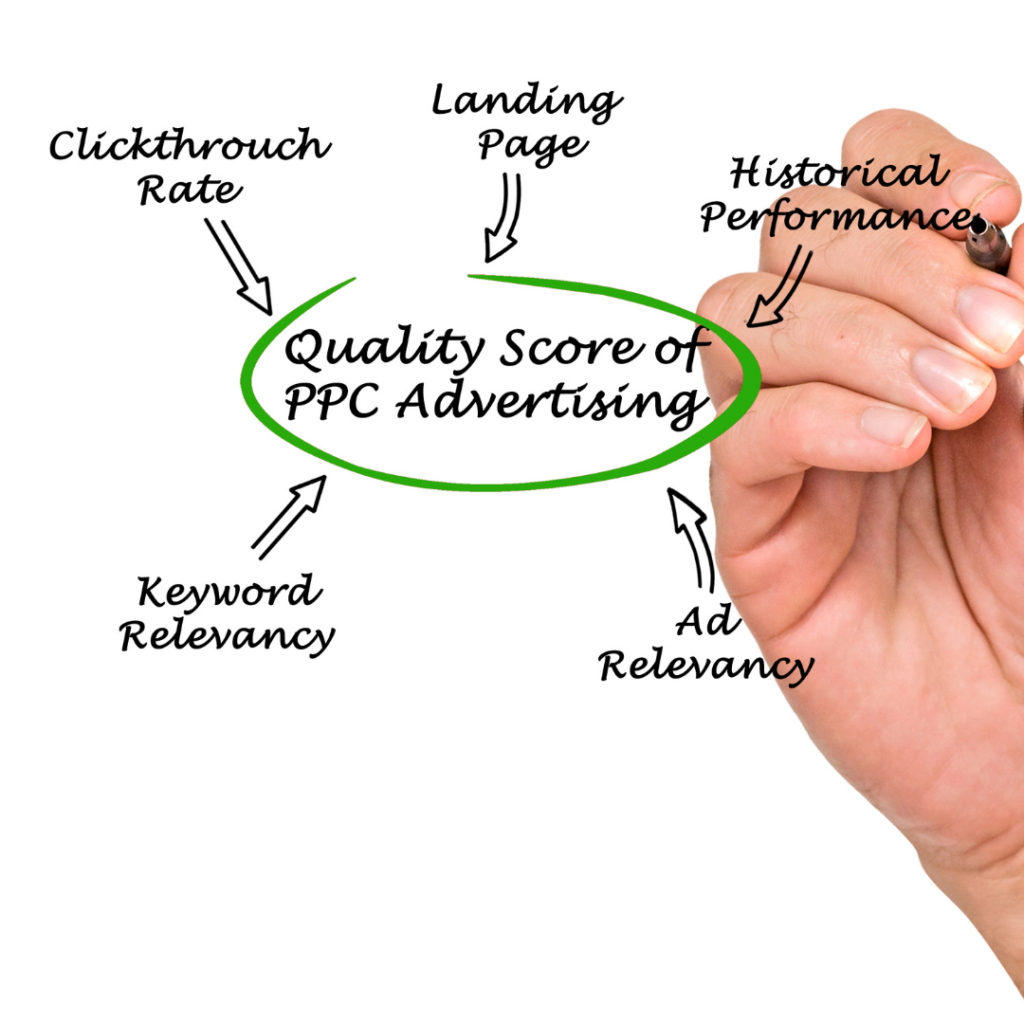Google Ads is an online advertising platform developed by Google, providing businesses and marketers with a powerful tool to promote their products and services across various digital channels.
Formerly known as Google AdWords, this platform allows advertisers to create and display ads on Google’s vast network, including the search engine results page, partner websites, and popular platforms like YouTube.
Google Ads operates on a pay-per-click (PPC) model, meaning advertisers only pay when users interact with their ads, whether through clicks or other specified actions.
Different Types of Campaign in Google Ads
A Google Ads Search campaign is a strategic online advertising initiative designed to connect businesses with potential customers actively searching for products or services on the Google search engine.
This campaign type operates on a pay-per-click (PPC) model, meaning advertisers pay when users click on their ads. The primary objective of a Search campaign is to ensure that a business’s offerings are prominently displayed when users input relevant search queries.
1. Search Campaign
Keyword Targeting
Keywords are the foundation of a Search campaign. Advertisers select specific keywords or phrases relevant to their products or services. When users enter these keywords into the Google search bar, the ads are triggered, ensuring relevance and aligning with user intent.
Ad Creatives
Compelling ad creatives are crucial for attracting user attention. Advertisers craft concise and engaging headlines and descriptions, aiming to communicate the unique selling propositions of their offerings. Ad extensions, such as site links and callouts, provide additional information to entice users.
Bidding and Budgeting
Advertisers set bids for their chosen keywords, indicating the maximum amount they are willing to pay for a click. The budget, on the other hand, determines the overall spending limit for the campaign. Google’s auction system then considers both bid and ad quality to determine ad placement.
Ad Rank and Quality Score
Ad Rank is a crucial factor in Google Ads auctions, determining the position of an ad on the search results page. It is influenced by the bid amount and the Quality Score.
Quality Score is a metric that evaluates the relevance and quality of keywords, ad creatives, and landing pages. A higher Quality Score can positively impact ad performance.
Ad Targeting and Segmentation
Advertisers can refine their targeting by selecting geographic locations, languages, and devices for their ads to appear. Moreover, the use of audience targeting, demographics, and remarketing lists allows for further segmentation, ensuring ads reach the most relevant audience.
Conversion Tracking
Implementing conversion tracking is essential for measuring the success of a Search campaign. Advertisers can track actions such as form submissions, purchases, or calls, providing valuable insights into the campaign’s effectiveness and return on investment (ROI) and if you are looking for an google ads agency in pune then get social is the right place for you.
Continuous Optimization
A successful Search campaign involves ongoing optimization. This includes refining keyword lists, testing ad variations, adjusting bids based on performance, and analyzing search query reports to identify new opportunities or negative keywords.
The significance of Google Ads Search campaigns lies in their ability to tap into user intent. Unlike display advertising, where ads are shown based on demographics or interests, Search campaigns are triggered by specific search queries, ensuring a high level of relevance.
Advertisers can capture potential customers at the moment they express interest in a product or service, making Search campaigns a powerful tool for driving conversions and maximizing advertising ROI.
2. Display Campaign
A Display Campaign in Google Ads is a strategic advertising initiative designed to increase brand visibility and reach a broader audience across the expansive Google Display Network (GDN).
Unlike Search Campaigns that focus on text-based ads within search results, Display Campaigns leverage a variety of visual ad formats, including image ads, responsive ads, and even video ads, to capture the attention of users as they browse websites, watch videos, or engage with content across the internet.
Ad Formats
Display Campaigns encompass diverse ad formats. Image ads allow advertisers to showcase products or convey brand messages through visually appealing graphics.
Responsive ads automatically adjust to fit different ad spaces, optimizing the viewing experience across various devices. Video ads, another vital component, bring dynamic and engaging content to users, further enhancing brand storytelling.
Targeting Options
Display Campaigns offer a plethora of targeting options to ensure ads reach the most relevant audience. Advertisers can target based on demographics, including age, gender, and household income.
Interest-based targeting allows ads to be displayed to users with specific interests or behaviors. Remarketing enables the targeting of users who have previously interacted with the brand, reinforcing engagement and encouraging conversions.
Placements and Contextual Targeting
The ability to choose specific placements, such as websites, apps, or even individual web pages, empowers advertisers to tailor their message to align with the content of those placements.
Contextual targeting analyzes the content of web pages to determine relevance, ensuring that ads appear in contexts that resonate with the target audience.
Automated Targeting
Google’s machine learning algorithms play a crucial role in optimizing Display Campaigns. Automated targeting leverages these algorithms to identify potential audiences likely to engage with the ads based on their behavior, preferences, and online activities. This feature simplifies the targeting process and enhances campaign efficiency.
Bidding Strategies
Advertisers can choose from various bidding strategies to optimize campaign performance. Cost-per-thousand impressions (CPM) bidding focuses on maximizing ad visibility, while cost-per-click (CPC) bidding charges advertisers only when users click on their ads.
Smart Bidding strategies, powered by machine learning, automatically adjust bids to achieve the desired outcomes, such as conversions or conversion value.
Ad Customization and Personalization
Display Campaigns allow for creative flexibility and personalization. Advertisers can tailor ad messaging, visuals, and calls-to-action to resonate with specific audience segments.
Dynamic ads take personalization a step further by automatically adapting content based on user interactions or preferences, delivering a more personalized experience.
3. Video Campaigns
A Video Campaign in Google Ads is a strategic advertising initiative designed to leverage the dynamic and engaging nature of video content to reach and connect with users.
These campaigns operate across various platforms, most prominently on YouTube, one of the world’s largest video-sharing platforms.
Video Campaigns enable advertisers to showcase their products, services, or brand messages through compelling visual narratives, providing a platform for creative storytelling and audience engagement.
Ad Formats
Video Campaigns support different ad formats tailored for diverse marketing goals. In-stream ads play before, during, or after YouTube videos and can be skippable or non-skippable.
Discovery ads appear in search results, YouTube homepage, and related videos. Bumper ads are short, non-skippable ads of up to six seconds, designed for quick and impactful messaging and if you are looking for an best google ads agency in pune then get Social is the place.
Creative Flexibility
Video Campaigns offer advertisers creative flexibility to craft visually appealing and compelling content. Advertisers can convey their brand message, showcase products, or tell a story through the power of sight and sound.
This flexibility allows for immersive storytelling and building emotional connections with the audience.
Audience Targeting
Precise audience targeting is a cornerstone of Video Campaigns. Advertisers can reach specific demographics, interests, and behaviors, ensuring their video content is delivered to the most relevant audience. Custom affinity audiences and in-market audiences further refine targeting based on user interests and purchase intent.
Video Ad Sequencing
Video ad sequencing allows advertisers to tell a story over a series of videos. This feature enables a sequential storytelling approach, ensuring that viewers see ads in a specific order. Advertisers can guide the viewer through a narrative, presenting a cohesive and engaging brand experience.
YouTube Placement Options
Video Campaigns extend beyond YouTube to reach audiences across the Google Display Network. Advertisers can choose specific placements on YouTube, such as individual videos, channels, or YouTube search results. Additionally, ads can appear on websites and apps within the Google Display Network, expanding the reach of video content.
Bidding Strategies
Video Campaigns offer various bidding strategies to optimize ad delivery. Cost-per-view (CPV) bidding charges advertisers when viewers interact with their video ads, whether through clicks or watching a certain portion of the video. Target CPM (cost per thousand impressions) bidding focuses on maximizing ad visibility.
4. Shopping Campaigns
Promote products and drive sales for e-commerce businesses. Product Listing Ads (PLAs) showcase product images, prices, and store names on the Google Search Network, Google Shopping, and other Google properties. Utilizes product data from the Google Merchant Center. Organized by product groups and bids.
5. App Campaigns
Increase app installations and engagement for mobile applications. Ads appear across Google Search, Google Play, YouTube, and the Google Display Network.
Requires minimal manual input. Uses machine learning to optimize ad placements.
6. Discovery Campaigns
Showcase products and services to users as they explore content across Google properties. Utilizes visually engaging ads with images and headlines. Reaches users based on their interests. Covers the Discover feed, Gmail, and YouTube.
7. Smart Campaigns
Simplify the advertising process for small businesses looking to drive website visits, phone calls, or store visits. Uses automated ad creation and targeting. Minimal manual input required. Machine learning optimizes performance.
8. Local Campaigns
Drive store visits and local business engagement. Utilizes various ad formats across Google properties, including search, display, and maps. Displays business information and location. Focuses on store visits.
9. Hotel Campaigns
Promote hotel listings and attract bookings. Hotel ads appear in Google search results and Google Maps. Utilizes details like prices, ratings, and availability. Reaches users searching for hotel-related terms.
10. Lead Form Extensions
Collect leads directly within your ads without users needing to visit your website. Available as an extension in search ads. Forms can be tailored to collect specific information. Captured lead data is stored in Google Ads.
Each campaign type is tailored to address specific marketing goals, whether it’s driving website traffic, increasing brand awareness, promoting app installations, or facilitating local business engagement.
Advertisers can choose the most suitable campaign type(s) based on their objectives, target audience, and the nature of their products or services. It’s common for advertisers to combine multiple campaign types to create a comprehensive and effective Google Ads strategy.
Conclusion
Google Ads stands as a cornerstone in the realm of digital advertising, providing businesses with a versatile and dynamic platform to connect with their target audience.
Through a pay-per-click model and a comprehensive suite of tools, advertisers can strategically place their ads across the Google network, reaching users on the search engine, partner websites, and popular platforms like YouTube.
The platform’s strength lies in its ability to tailor advertising efforts through precise targeting, diverse ad formats, and insightful analytics and if you are looking for the best advertising agency in Pune then get social is the right place for you.







Add a Comment